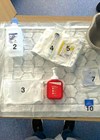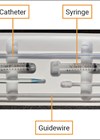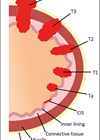Features
Practising surgery in a war zone: an interview with Dr Volodymyr Melnyk
It is now nine months since the full-scale Russian invasion of Ukraine commenced in late February 2022, with Putin announcing a “special military operation” to “denazify and demilitarise” Ukraine. The rest of the world, however, saw it for what it...
The Malcolm Coptcoat Travelling Fellowship Award
The Urology Foundation and The Malcolm Coptcoat Trust are pleased to announce the creation of The Malcolm Coptcoat Travelling Fellowship. The annual Fellowship will support travel to international centres of excellence for a period of four to six weeks to...
Movember addresses sexual health needs in prostate cancer patients
When Travis Garone and Luke Slattery met up in the Gypsy Bar in Melbourne for a quiet beer back in 2003 and came up with the idea for Movember, they could not have imagined what it would become and the...
The how, why and when of bladder washouts: a guide
Bladder washouts are a treatment usually employed by the urology team, more often in an inpatient setting, and commonly indicated for haematuria with clot retention and catheter bypassing [1,2]. Bladder washout is a cornerstone of treatment in urology wards, yet...
Sustainable healthcare: what steps can urologists take?
Human health is intrinsically linked to environmental health, making the ever-pressing climate crisis fundamentally a public health emergency. The healthcare sector is responsible for 8% of the UK’s greenhouse gas (GHG) emissions worldwide [1]. As the largest publicly funded healthcare...
Suprapubic catheterisation – a core surgical trainee’s perspective
Suprapubic catheters (SPCs) are in widespread usage in medical practice and this review will focus on the pre-assessment, indications, methods and complications that are associated with the insertion of an SPC. Although suprapubic catheter insertions may be done electively or...
Dr Glaucomflecken: Stayin’ Alive
Peter Cackett spoke to ophthalmologist and social media sensation Dr Glaucomflecken about his early days in comedy, the role satire can play in impacting medical governance, and where he might take his brand of medical comedy next. It was towards...
Keep patients at the heart of treatment decision
Rebecca Porta, Chief Executive of The Urology Foundation, and Chris Whitehouse, Chair of the Urology Trade Association, mark Urology Awareness Month. Rebecca Porta. Chris Whitehouse. Keep patients at the heart of treatment decision This September marked Urology Awareness Month (UAM),...
Frailty in urology – part 1
Part 2 of this topic can be found here Statement of the problem Clinical frailty carries an increased risk of poor health outcomes. The pathological process resulting in frailty is often overlooked and elucidating its aetiology and natural history are...
Recent developments in bladder cancer – MIBC
This article takes a look back over recent years at new innovations and developments relating to muscle-invasive bladder cancer (MIBC) specifically, and will also touch upon what the future may hold. This article is also written as a continuation of...
Burnout: is this just a pandemic phenomenon?
The phrase ‘burnout’ is often heard, but what is it, and what are the early warning signs? Importantly, how can it be prevented or managed? Over the last few years, health professional wellbeing, mental health, and burnout have come to...
Orchid: fighting male cancer for over 25 years
Orchid was established in 1996 by a young testicular cancer patient, Colin Osborne MBE, and the oncologist who saved his life, Professor Tim Oliver MD, FRCP. The charity exists to save men’s lives from testicular, penile, and prostate cancers and...















